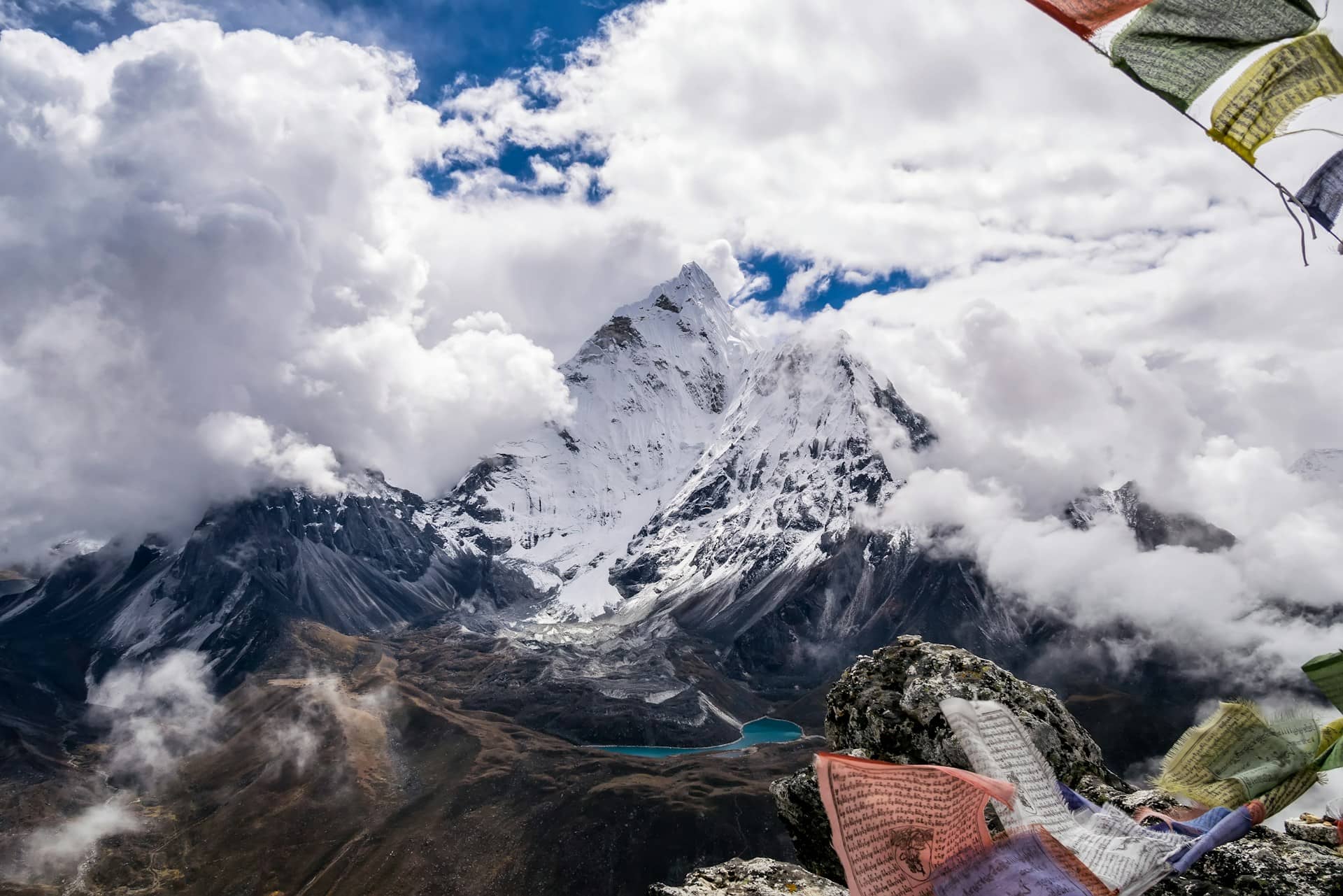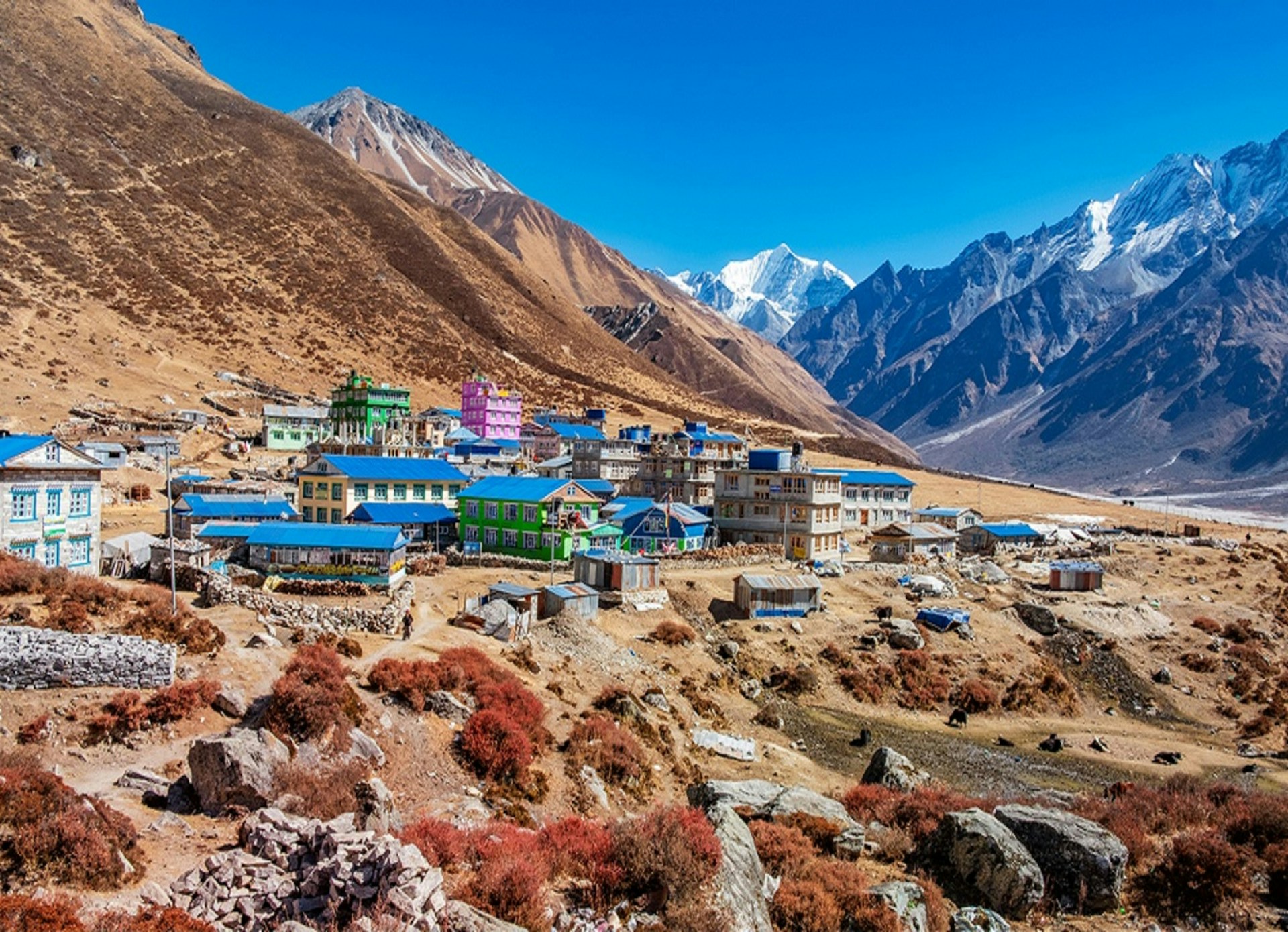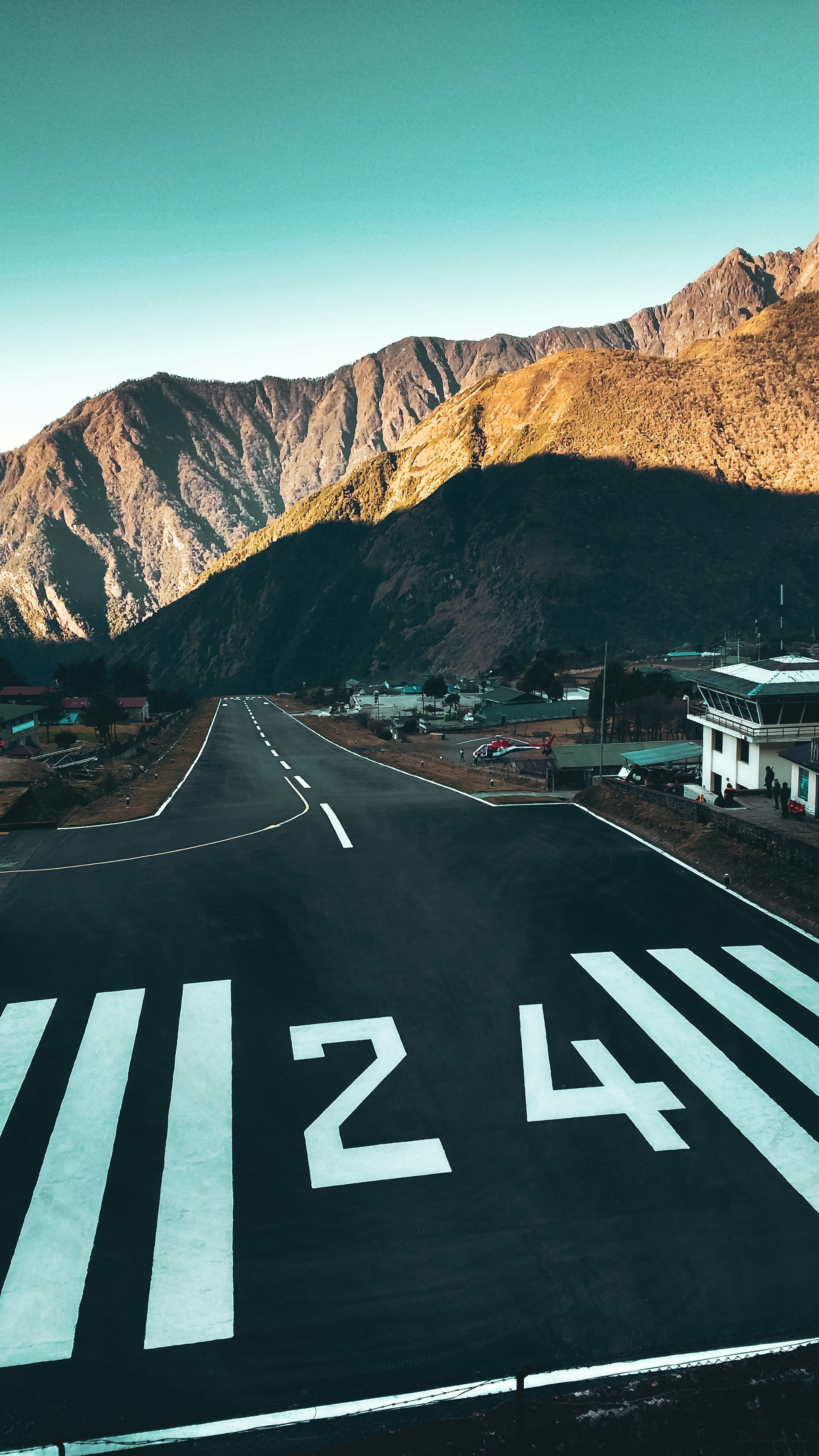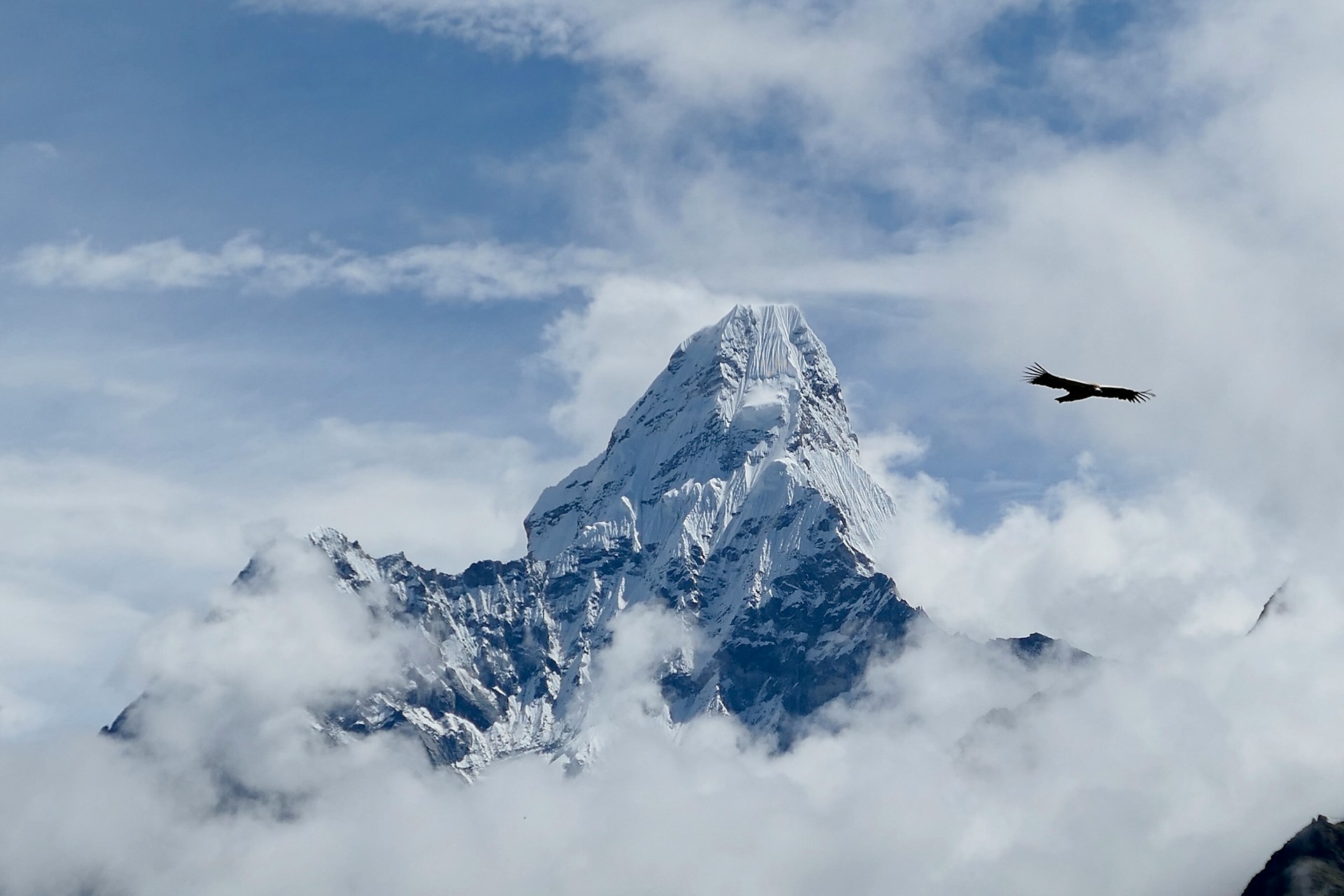Nepal, home to the majestic Himalayas and world-famous trekking routes, offers a paradise for trekkers and nature lovers alike. While spring (March- May) and autumn (September- November) are the peak seasons for trekking in Nepal, off-season trekking during monsoon (June-August) and winter (December- February) offers a unique and rewarding experience. Off-season trekking allows you to explore Nepal’s stunning landscapes without the heavy crowds, offering peace and solitude along with a more intimate cultural experience.
In this comprehensive guide, we’ll dive into why off-season trekking is a great option, the weather and climate during these periods, popular off-season trekking routes, tea house and accommodation availability, packing tips, and essential safety considerations for trekking in Nepal.

Discover the serene beauty of a small stupa perched on a mountain, with snow-capped peaks in the background, creating a perfect blend of spirituality and nature.
1. Why Choose Off-Season Trekking?
Off-season trekking in Nepal comes with both advantages and challenges. With the right preparation, it can be an incredible adventure.
Benefits of Off-Season Trekking in Nepal
- Fewer Crowds—Enjoy the trails without the usual tourist rush and have more personal interactions with locals.
- Budget-Friendly—Save money on accommodation, food, and trekking permits with lower off-season prices.
- Unique Scenic Beauty— The monsoon season brings lush green hills, blooming flowers, and waterfalls, while winter offers clear blue skies and stunning snow-covered peaks.
- More Flexibility—Fewer trekkers mean you don’t need to book teahouses in advance, allowing for a flexible itinerary.
Challenges of Off-Season Trekking in Nepal
- Unpredictable Weather—Monsoon rains can cause muddy trails and landslides, while winter snow may block high passes.
- Limited Services—Some tea houses and transport options are closed, particularly in remote regions.
- Trail Conditions—Expect slippery paths in monsoon season and icy terrain in winter—proper gear is a must.
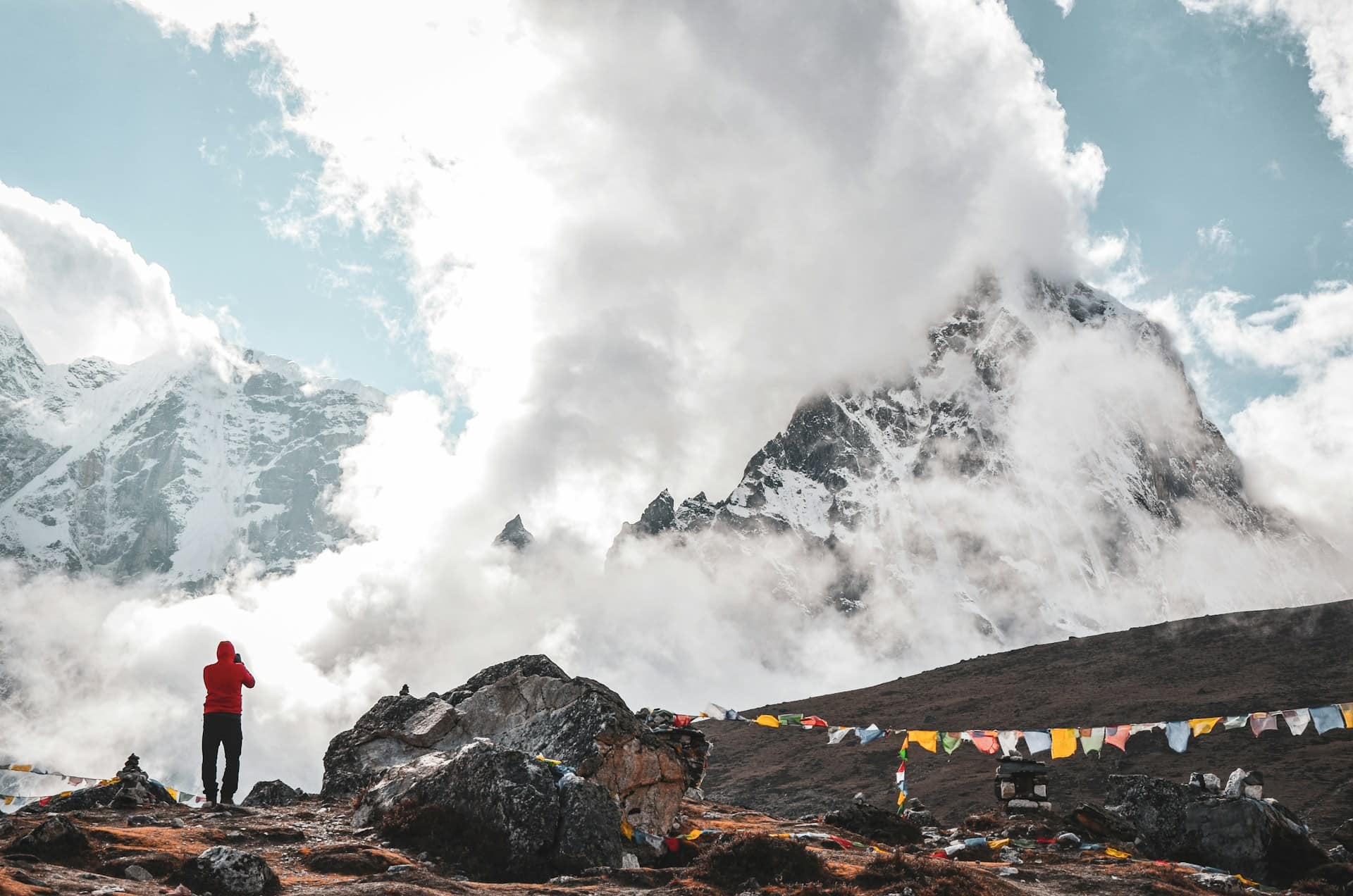
See a man capturing the breathtaking view of clouds and mountains, embracing nature's beauty through photography in this serene landscape.
2. Weather and Climate to Expect in Off-Season Trekking in Nepal
Trekking in Nepal during the off-season might not be everyone’s first choice, but for those who crave solitude, dramatic landscapes, and a bit of unpredictability, it can be a rewarding adventure. Here's what to expect during the monsoon and winter trekking periods:
Monsoon Season (June-August)
Nepal experiences heavy rainfall, especially in the lowlands and mid-hills, making some routes muddy and prone to landslides. However, treks in rain-shadow areas like Upper Mustang and Dolpo remain dry and accessible.
What to Expect:
- Temperatures: 15°C–30°C (lower altitudes)
- Best for: Upper Mustang, Manang, and Dolpo Treks
- Challenges: Slippery trails, leeches, cloud-covered mountain views
Winter Season (December-February)
Winter trekking brings spectacular clear skies, fewer crowds, and snow-covered landscapes. However, temperatures drop significantly, and some high-altitude passes (like Thorong La) may be closed.
What to Expect:
- Temperatures: 10°C (lower regions) to -10°C or lower (higher altitudes)
- Best for: Everest Base Camp, Langtang Valley, Annapurna Circuit (lower sections)
- Challenges: Extreme cold, snow-covered trails, fewer open teahouses.
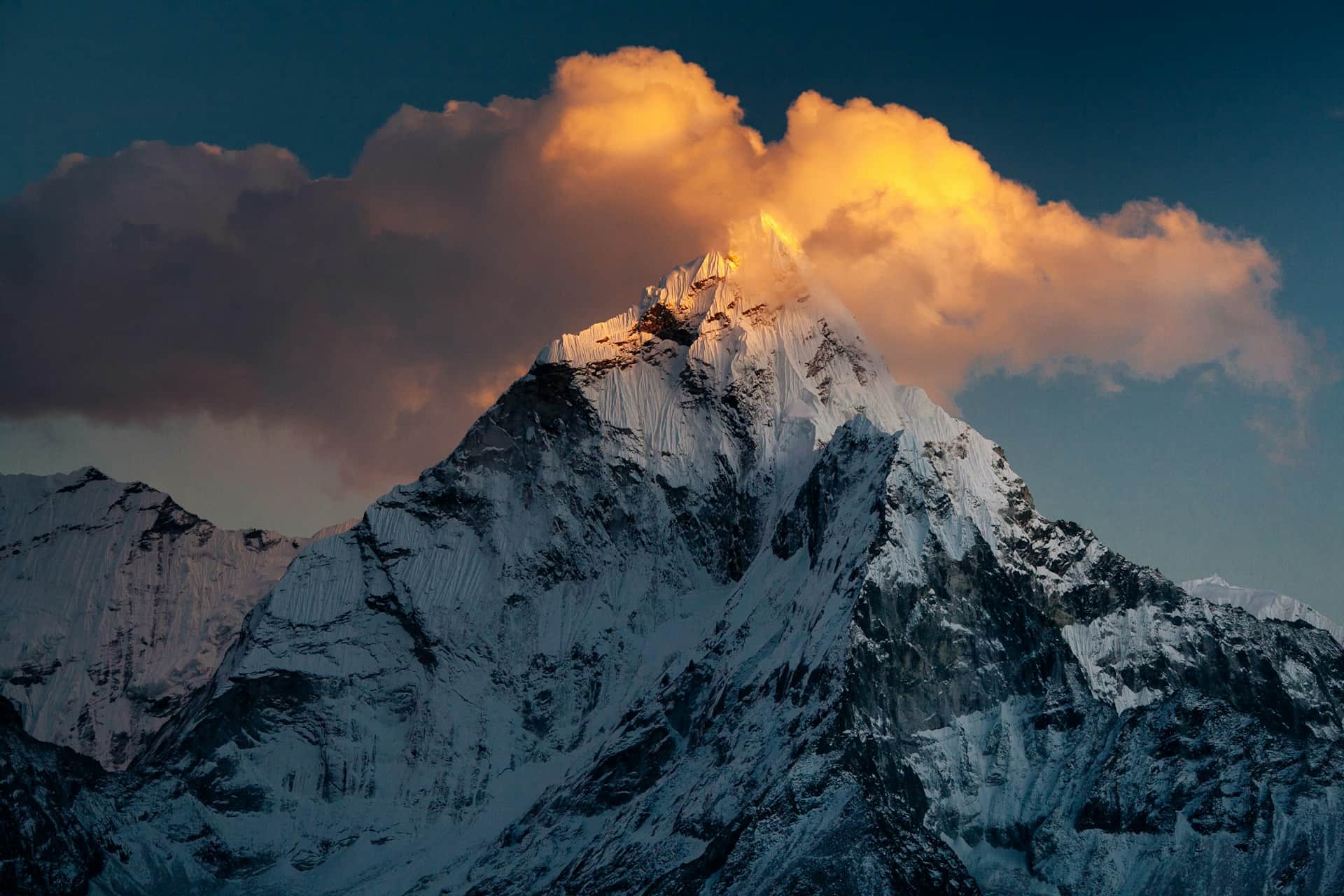
Marvel at the breathtaking view of a snow-covered mountain peak, with soft clouds and sunlight gently touching its summit, creating a serene and awe inspiring landscape.
3. Best Off-Season Treks in Nepal
While some trails may be difficult in monsoon or winter, several routes remain accessible year-round.
3.1. Annapurna Circuit Trek
The Annapurna Circuit is one of the most diverse treks in Nepal, offering a wide range of landscapes, from subtropical forests to high-altitude deserts. This trek is popular both in the monsoon and winter seasons, especially in the areas beyond the rain-shadow zone, such as Upper Mustang and Manang.
- Monsoon Season: The section between Besi Sahar and Chame receives heavy rainfall, but once you cross into the rain-shadow areas, the weather becomes much drier and more pleasant.
- Winter Season: In winter, the Thorong La Pass (5,416 meters) can be closed due to heavy snowfall, but lower sections of the trek remain accessible. The cold is a challenge, but it offers clear skies and stunning snowy landscapes.
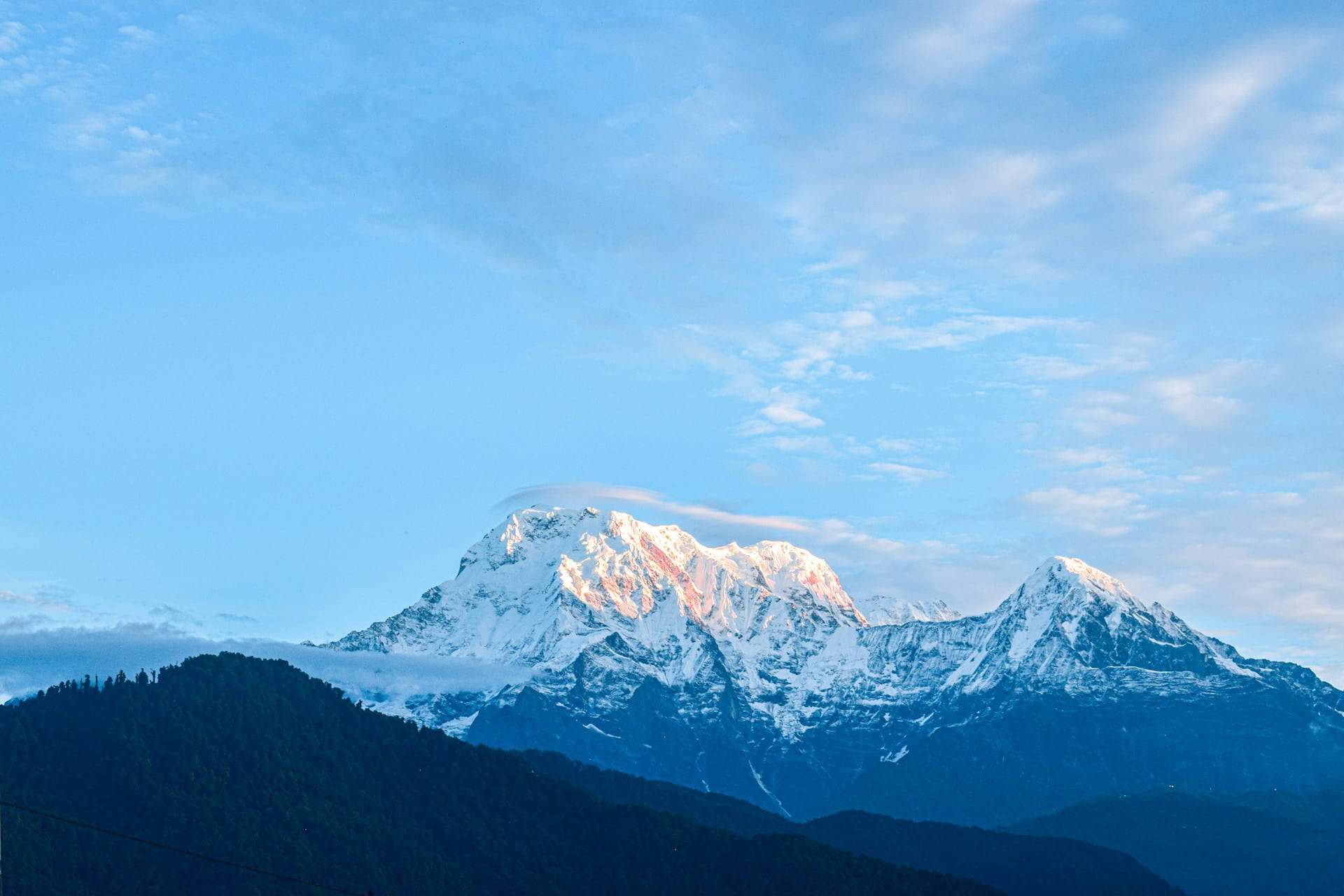
Discover the stunning beauty of snow-covered mountain peaks, offering a serene and majestic landscape perfect for nature lovers and adventurers alike.
3.2 Langtang Valley Trek
The Langtang Valley Trek, close to Kathmandu, is a beautiful trek offering views of Langtang Lirung and other Himalayan peaks. It’s suitable for both monsoon and winter, providing trekkers with an immersive experience in lush valleys and high-altitude meadows.
- Monsoon Season: The lower trails may be wet, but the valley becomes incredibly lush and green. The beauty of Langtang’s meadows and mountains during the monsoon is unmatched.
- Winter Season: Snow blankets the higher sections of the trek, but the lower parts remain accessible. With fewer crowds, this trek offers quiet during winter.
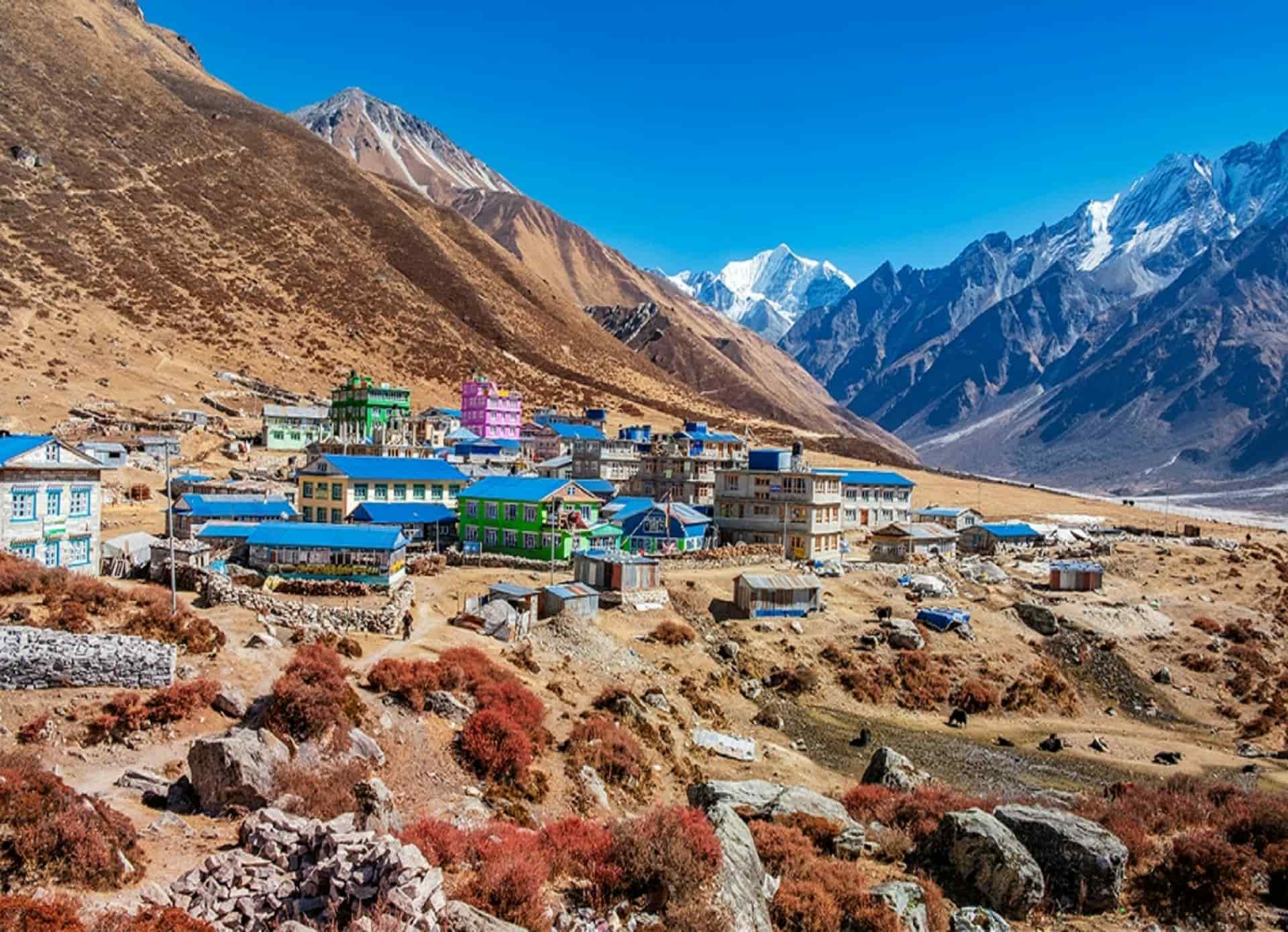
Experience the peaceful beauty of a village nestled in the foreground, with towering mountains creating a stunning backdrop that enhances the serene atmosphere.
3.3. Everest Base Camp Trek
The Everest Base Camp Trek is perhaps the most famous trekking route in the world. The EBC trek can be done in both the monsoon and winter months, though each season presents unique challenges.
- Monsoon Season: Monsoon clouds often obscure views of Everest, and the lower trails can be muddy. Lukla flights may be delayed due to bad weather, but trekking in this season offers solitude and a richer cultural experience in the Sherpa villages.
- Winter Season: Winter trekking in the Everest region is cold but rewarding, with crystal-clear views of the Himalayas and far fewer trekkers. Although the temperatures can drop drastically, most teahouses remain open, making the trek feasible.
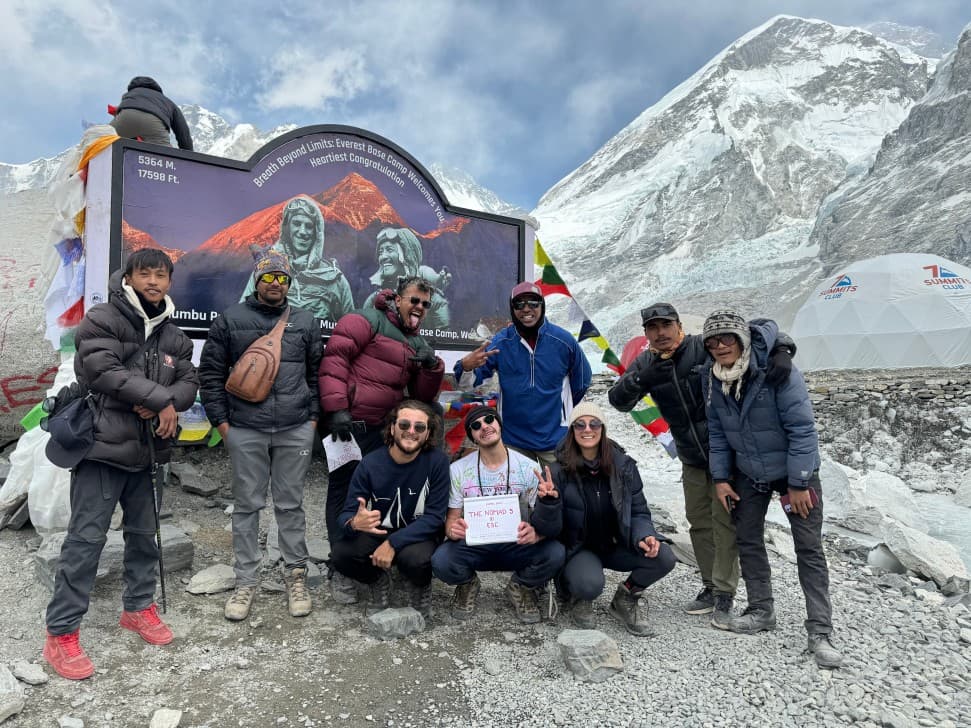
Experience the awe-inspiring view of Everest Base Camp, where trekkers begin their journey to the world's highest peak, surrounded by breathtaking mountain landscapes.
3.4. Upper Mustang Trek
The Upper Mustang Trek is one of the best choices for monsoon trekking, as it lies in the rain shadow of the Annapurna and Dhaulagiri ranges. This region has a desert-like landscape with stunning rock formations and is rich in Tibetan culture.
- Monsoon Season: Since Upper Mustang receives very little rain, it is perfect for trekking during the monsoon months.
- Winter Season: Winter in Upper Mustang can be quite cold, and some parts may be inaccessible due to snow. However, the dry, crisp weather offers excellent trekking conditions for those who can handle the cold.
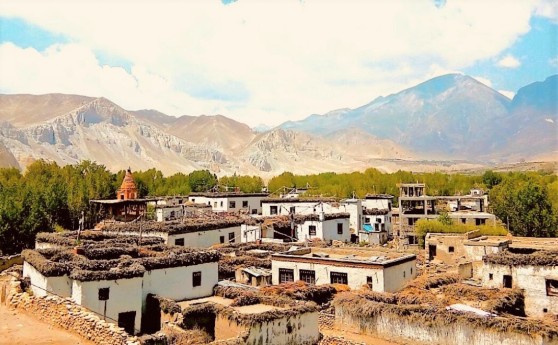
Explore the beauty of Upper Mustang Trek, where picturesque villages are nestled amidst stunning mountains, offering a perfect blend of nature and culture.
3.5. Mardi Himal Trek
Mardi Himal is a shorter trek in the Annapurna region, known for its off-the-beaten-path trails and stunning views of Annapurna South and Machapuchare (Fishtail). It’s an excellent choice for off-season trekking due to its accessibility and varied terrain.
- Monsoon Season: Expect some rainfall, but the lush green forest and waterfalls make it a scenic experience. The trails may be muddy, but the solitude of the trek makes up for it.
- Winter Season: The trek is less crowded in winter, and though it gets cold at higher elevations, the views of snow-capped peaks are spectacular.
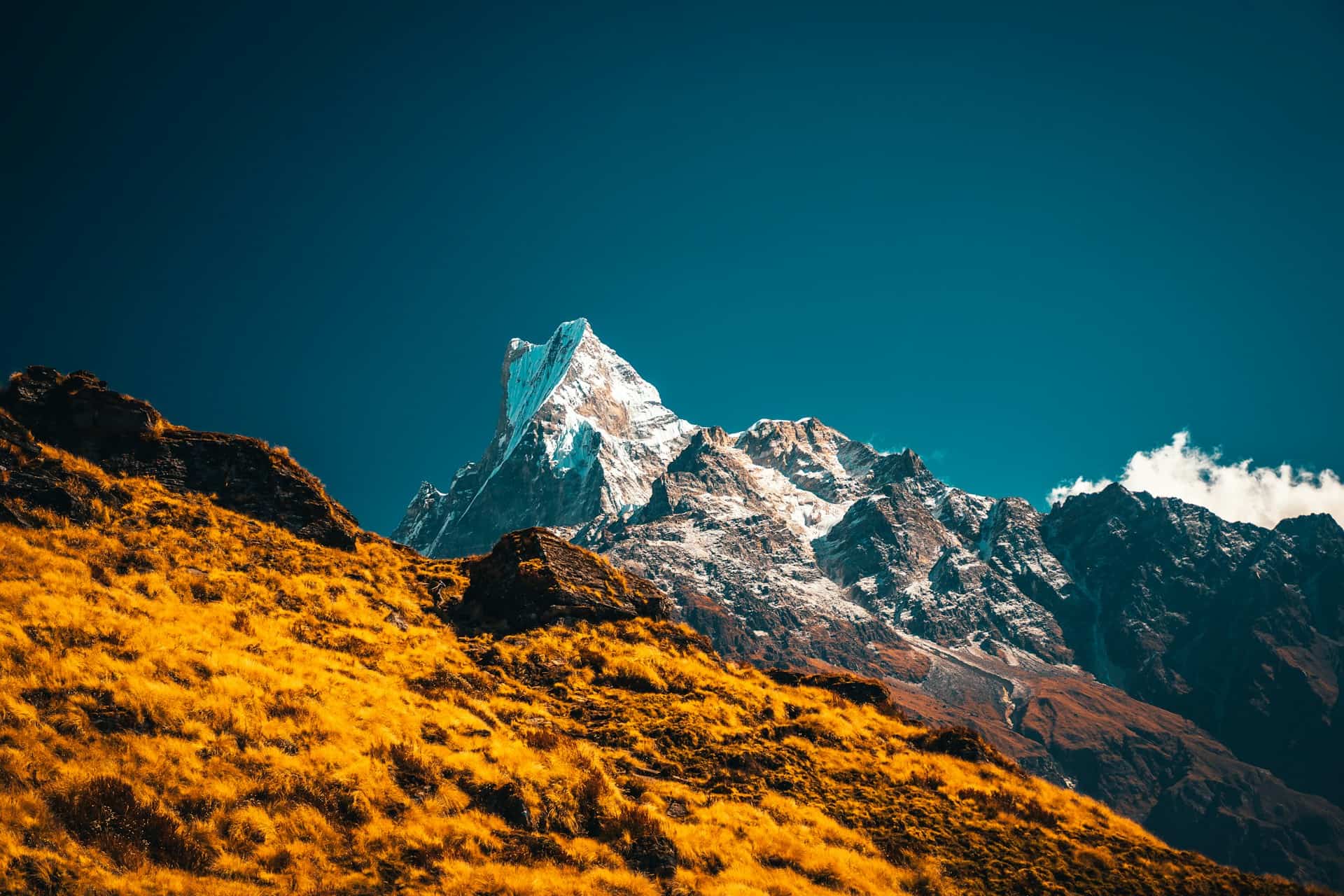
Admire the breathtaking view of Machhapuchhre Peak, with its snow covered and in background standing tall against the clear sky, offering a spectacular and serene landscape.
3.6. Manaslu Circuit Trek
The Manaslu Circuit is a remote and challenging trek, offering trekkers an alternative to the busier Annapurna Circuit. It circles Mount Manaslu, the eighth-highest mountain in the world, and is suitable for off-season trekking, particularly in the rain-shadow regions.
- Monsoon Season: The lower sections experience heavy rain, but as you ascend, the rainfall decreases. The trails are quieter, and the scenery is lush and green.
- Winter Season: Winter trekking here can be difficult due to snow on the Larkya La Pass (5,106 meters), but the trek offers stunning mountain views and solitude for those who venture out.
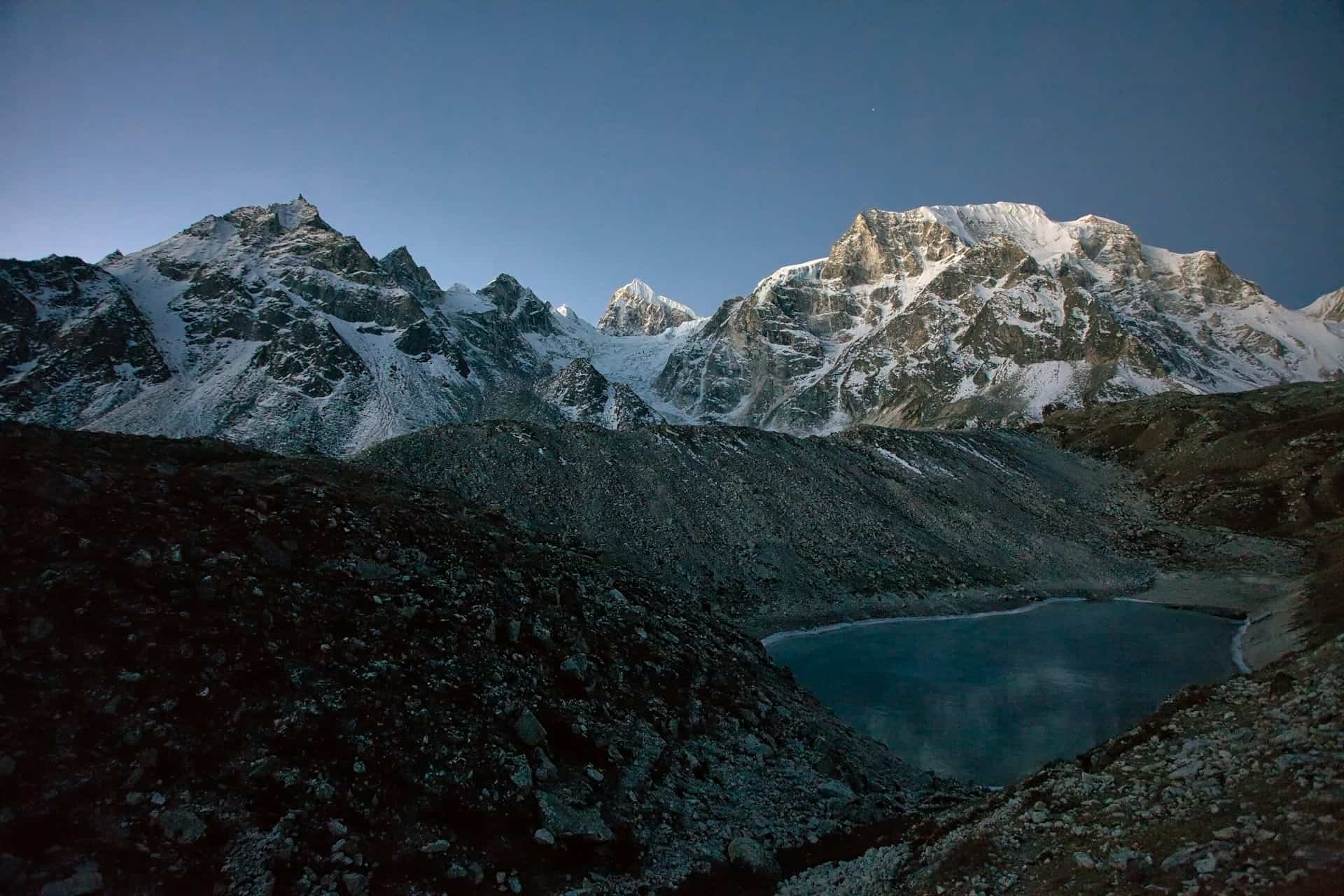
Experience the serene beauty of a small lake nestled with a majestic mountain backdrop, creating a peaceful and picturesque landscape perfect for nature lovers.
4. Tea Houses and Accommodations During Off-Season Trekking in Nepal
When trekking in Nepal during the off-season, understanding the availability and quality of teahouses and accommodations is crucial for a comfortable experience. Here’s what you need to know about tea houses and other lodging options during this time.
Key Things to Know About Tea Houses Off-Season
- Many teahouses remain open in lower-altitude areas like Everest Base Camp, Langtang, and Annapurna.
- Some high-altitude tea houses close in winter and monsoon, so research before your trek.
- Less crowding means better hospitality and more relaxed stays.
- Bring extra snacks and warm gear in case of limited food options or power outages.
Tip: Call ahead to confirm accommodations, especially in remote areas.
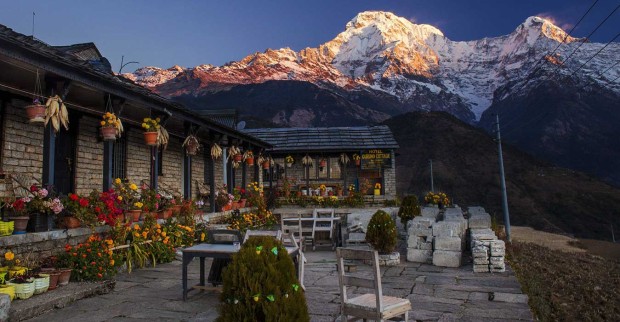
Relax at a beautiful tea house with a stunning view of snow covered mountains in the background, offering a cozy retreat amidst breathtaking nature.
5. Essential Tips for a Safe Off-Season Trek
- Check Weather Conditions – Always check forecasts before setting off. Sudden snowfall or landslides can change plans.
- Choose the Right Gear – Waterproof gear for monsoon, thermal layers for winter, and sturdy trekking boots for both.
- Carry Navigation Tools – Less-traveled paths may be unmarked. Bring GPS, maps, or a trekking app.
- Acclimatize Properly – Take rest days at higher altitudes to prevent altitude sickness.
- Hire a Local Guide or Porter – Guides help navigate trails safely, especially in off-season conditions.
- Travel Insurance – Ensure it covers high-altitude trekking, medical emergencies, and helicopter evacuation.
- Stay Flexible – Weather delays are common, so add buffer days to your itinerary.
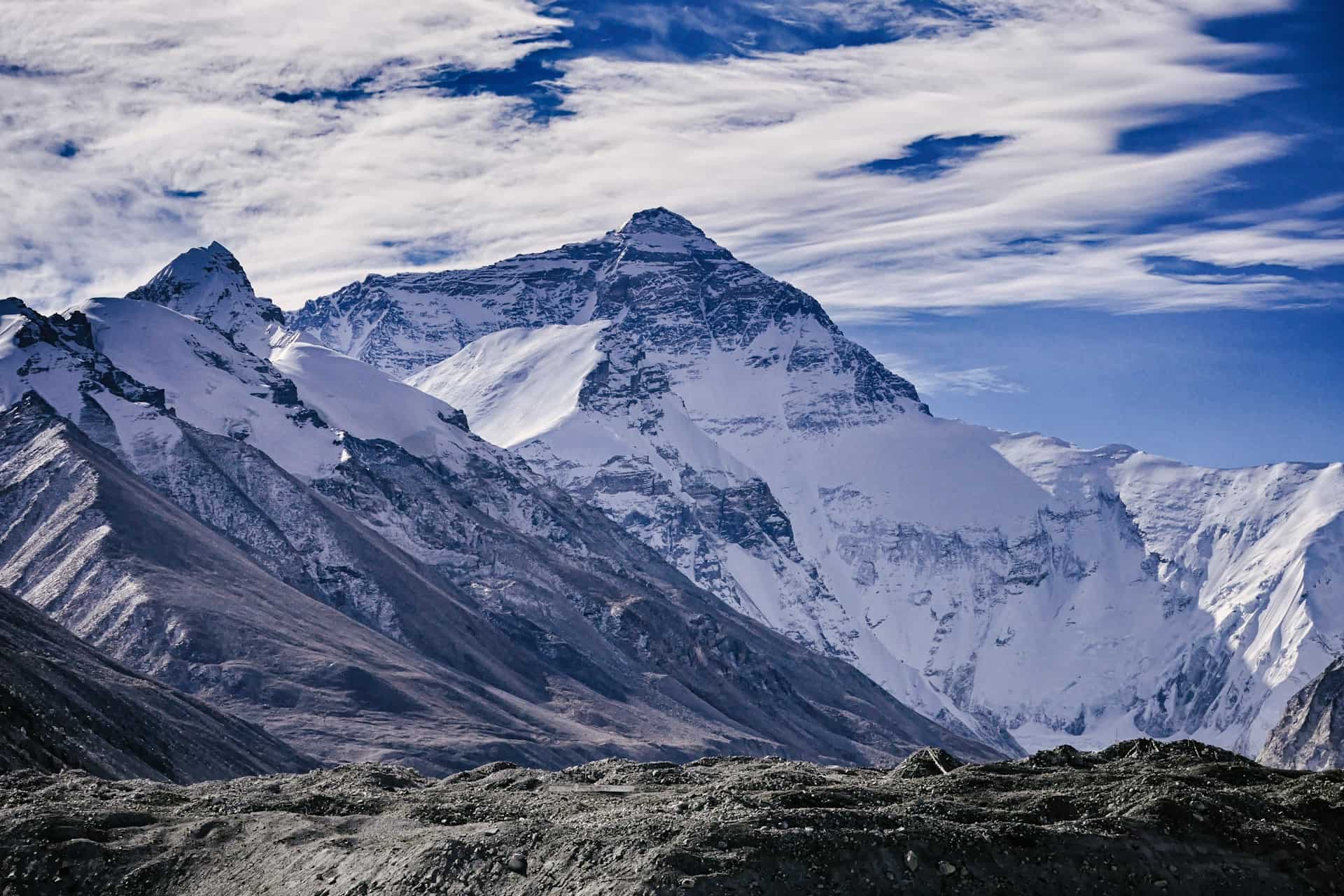
Experience the stunning beauty of a snow-covered mountain, offering a magnificent view that captures the essence of nature’s tranquility and grandeur.
10 Packing Tips for Off-Season Trekking in Nepal
Packing wisely for an off-season trek in Nepal is crucial for ensuring comfort, safety, and enjoyment. Here are some detailed packing tips to help you prepare.
1. Layered Clothing System
Base Layer:
- Material: Choose moisture-wicking fabrics (like Merino wool or synthetic fibers) to keep sweat away from your skin.
- Examples: Long-sleeve shirts, thermal tops, and leggings.
Insulating Layer:
- Material: Fleece or down jackets provide warmth without adding too much weight.
- Examples: Fleece jackets, down vests, or synthetic insulated jackets.
Outer Layer:
- Waterproof and Windproof: A durable jacket that protects against rain and wind is essential during off-season treks.
- Examples: Gore-Tex jackets or similar high-quality rain jackets.
2. Footwear
Trekking Boots:
- Features: Sturdy, waterproof, and well-ankled boots with good grip are vital for stability on slippery or uneven trails.
- Break-in: Make sure your boots are broken in before your trek to avoid blisters.
Camp Shoes:
- Comfort: Lightweight sandals or camp shoes are perfect for relaxing at the end of the day.
- Examples: Crocs or flip-flops.
3. Sleeping Gear
Sleeping Bag:
Temperature Rating: Choose a sleeping bag rated for the temperatures you expect to encounter. A four-season sleeping bag is ideal for off-season trekking.
Compression Sack: Use a compression sack to save space in your backpack.
Sleeping Pad:
- Insulation and Comfort: A lightweight sleeping pad adds comfort and insulates against cold ground. Look for self-inflating or inflatable options.
4. Cooking and Eating Gear
Portable Stove:
- Lightweight: If camping, pack a lightweight camping stove with fuel.
- Options: Choose between canister stoves or liquid fuel stoves based on your preference.
Cookware:
- Basic Set: Bring a lightweight pot, pan, and utensils. Collapsible cookware is a great space-saver.
- Reusable Containers: Consider bringing reusable containers for leftovers or snacks.
Eating Utensils:
- Spork: A combined spoon and fork reduces the need for multiple utensils.
- Reusable Water Bottle: A durable, insulated water bottle helps keep drinks hot or cold.
5. Hydration
Water Bottles:
- Capacity: Carry at least 2-3 liters of water. Consider a hydration bladder for easy access.
- Purification: Pack water purification tablets or a portable water filter to ensure safe drinking water.
6. Emergency and Safety Gear
First Aid Kit:
- Essentials: Include band-aids, antiseptic wipes, pain relievers, blister treatment, and altitude sickness medication.
- Personal Medications: Don’t forget any personal medications you may need.
Survival Gear:
- Whistle: Useful for signaling in emergencies.
- Multi-Tool: A compact multi-tool can be invaluable for various tasks on the trail.
- Emergency Blanket: A lightweight thermal blanket can provide warmth if needed.
7. Navigation and Communication
Maps and GPS:
- Physical Maps: Carry physical maps of the trekking route. Familiarize yourself with the trail before departure.
- GPS Device or App: Use trekking apps like Maps.me or Gaia GPS for navigation.
Portable Charger:
- Backup Power: Carry a portable charger for your phone and GPS devices, especially if you plan to use them frequently.
8. Personal Hygiene
Toiletries:
- Essentials: Pack travel-sized toiletries, biodegradable soap, a toothbrush, toothpaste, and a quick-dry towel.
- Toilet Paper: Bring a small supply, as it may not be available in all teahouses.
Sanitation Supplies:
- Hand Sanitizer: Carry hand sanitizer to maintain hygiene.
- Wet Wipes: Useful for freshening up when showers aren’t available.
9. Weather Considerations
Sun Protection:
- Sunscreen: Use a high-SPF sunscreen to protect against UV rays, especially at higher altitudes.
- Sunglasses: Wear UV-blocking sunglasses to protect your eyes from glare.
Warm Accessories:
- Hat and Gloves: Pack a warm hat, gloves, and neck gaiter or buff for cold weather.
- Beanie: A beanie is perfect for warmth at night or in the early morning.
10. Backpack
- Size: Choose a backpack that fits your needs, typically between 40 and 65 liters for a multi-day trek.
- Comfort Features: Look for adjustable straps, padded hip belts, and breathable back panels for comfort during long days of trekking.
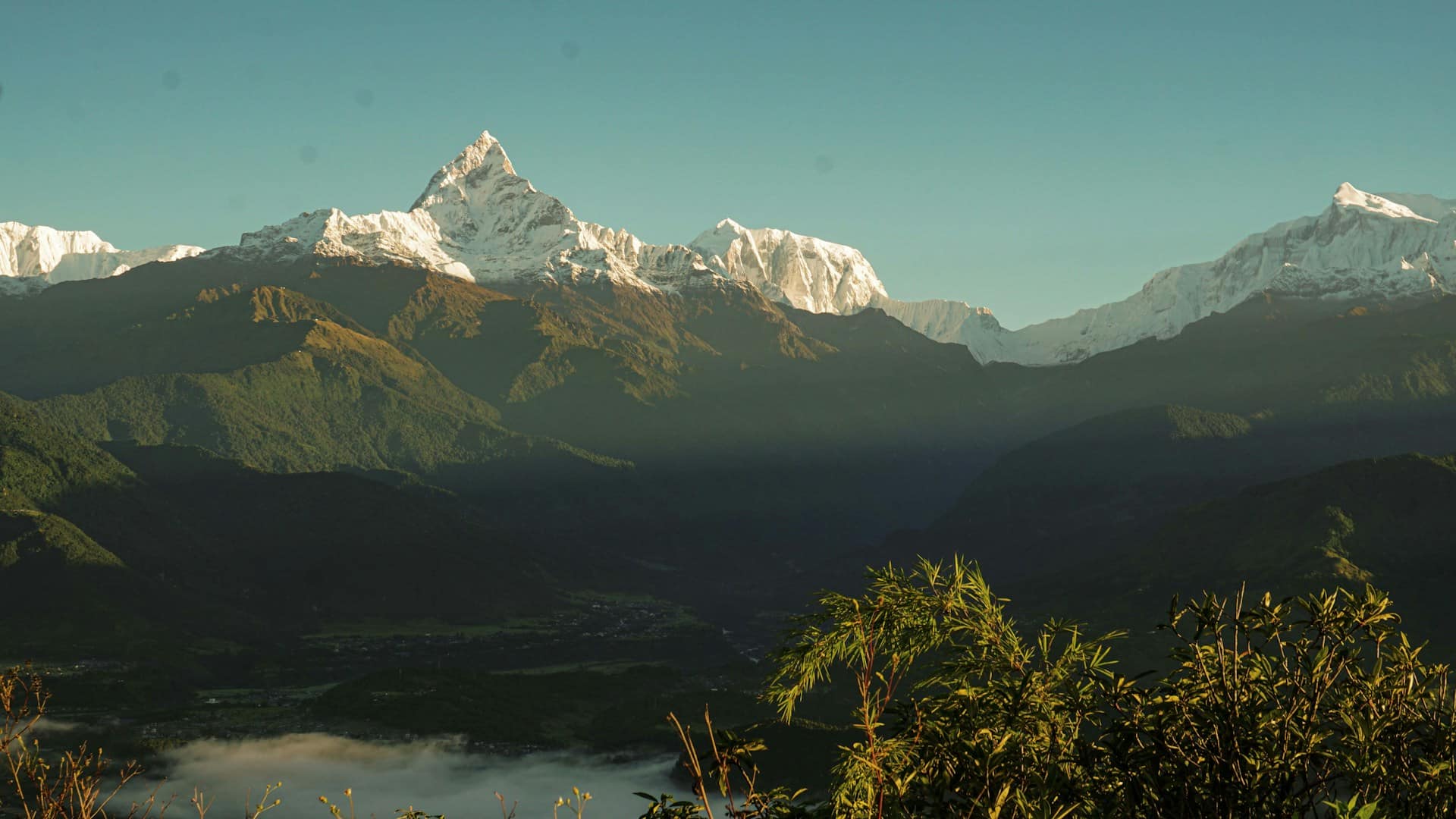
Discover the peaceful beauty of a mountain lake, framed by lush green landscapes, offering a perfect blend of tranquility and natural splendor.
Reason to Choose Vajra Adventure for Off-Season Trek in Nepal
At Vajra Adventure, we understand that choosing the right partner for your off-season trek in Nepal is vital for an unforgettable experience. Our commitment to exceptional service and deep knowledge of the region sets us apart as the perfect choice for your adventure. Here’s why you should trek with us.
1. Local Expertise
At Vajra Adventure, our guides are not just knowledgeable; they are local experts who know every trail, peak, and cultural nuance of the region. With years of experience leading treks in various seasons, they are well-equipped to navigate the unique challenges and hidden treasures that come with off-season trekking.
2. Customized Itineraries
We understand that each trekker has their own preferences and goals. That’s why we offer personalized trekking itineraries tailored to fit your interests, whether you're looking for a scenic retreat, an adventure-packed journey, or an immersive cultural experience. Your trek with us will be designed specifically for you.
3. Commitment to Sustainability
Vajra Adventure is dedicated to sustainable tourism. We prioritize environmentally friendly practices and actively support local communities. By trekking with us, you contribute to preserving the natural beauty of Nepal while also uplifting the lives of those who inhabit these stunning landscapes.
4. Comfortable Accommodations
Off-season trekking can sometimes make lodging challenging, but not with Vajra Adventure. We ensure that you have access to quality tea houses and lodges along your route, offering comfortable accommodations that allow you to relax and recharge after a day of trekking.
5. Safety First
Your safety is paramount to us. Our guides are trained in first aid and are knowledgeable about altitude sickness and other safety measures. We take extra precautions to ensure your well-being, providing you with peace of mind so you can fully enjoy your trekking experience.
Trek Off-Season with Vajra Adventure
Book the Vajra Adventure for your off-season trek in Nepal to embark on a journey with a dedicated team that values your experience as much as you do. With our local expertise, personalized itineraries, commitment to sustainability, comfortable accommodations, and unwavering focus on safety, we’re here to make your adventure in Nepal truly unforgettable.
Recent Blog Posts
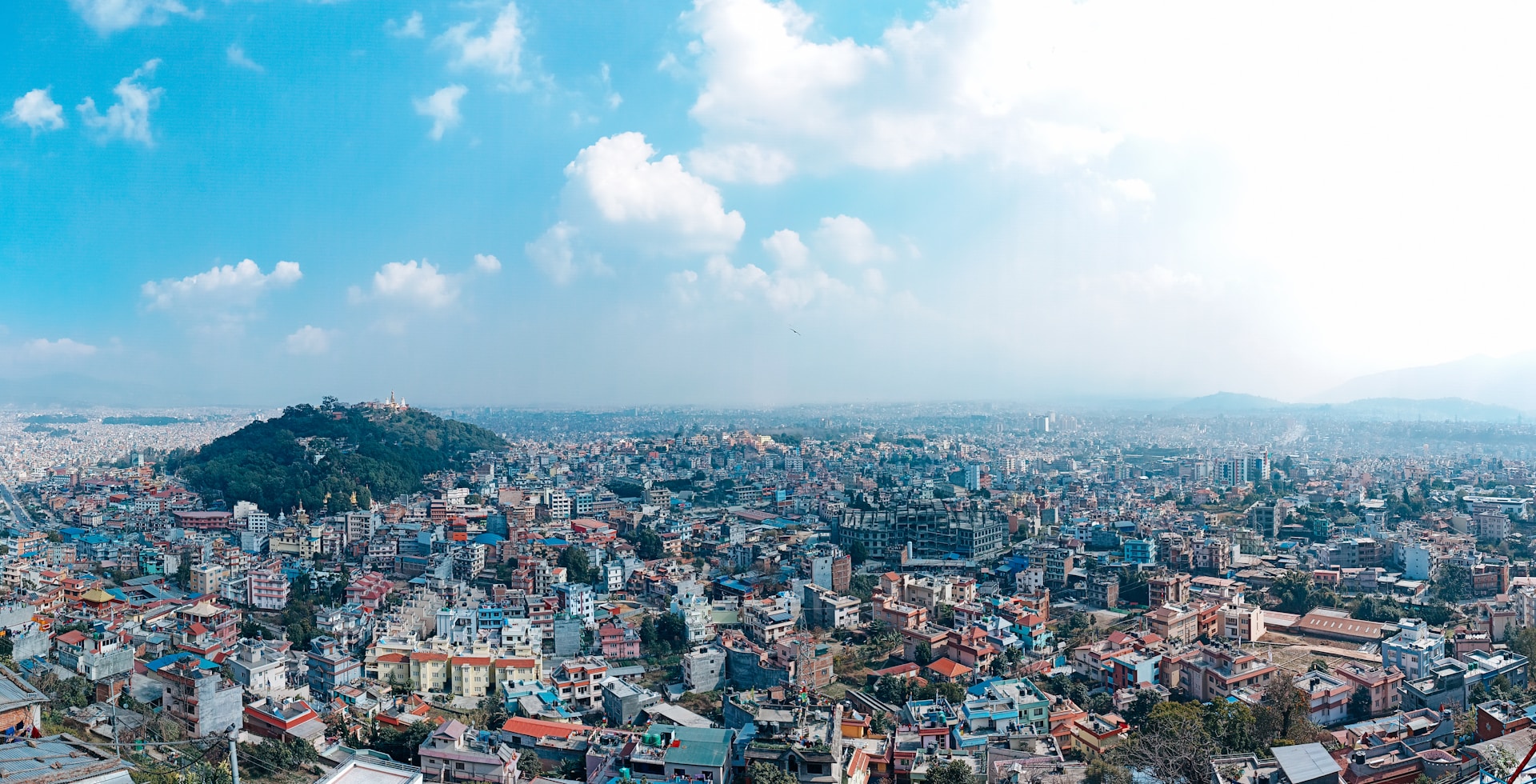
Kathmandu Valley: Exploring the Capital of Nepal
Jun 15, 2025
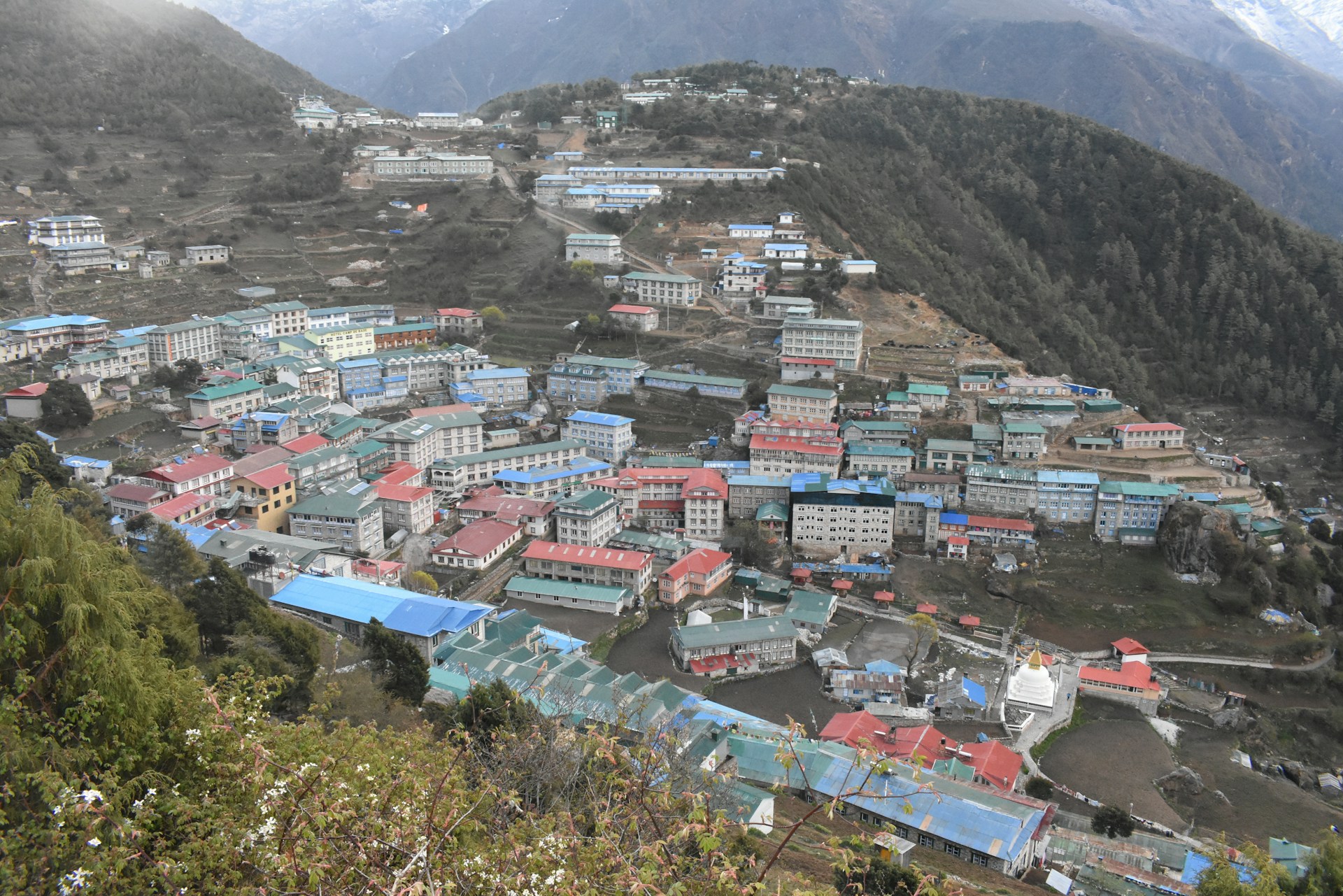
Namche Bazaar: What to Expect in the Sherpa Capital
May 20, 2025
